
SakenowaRecord your sake experiences and discover your favorites
Timeline

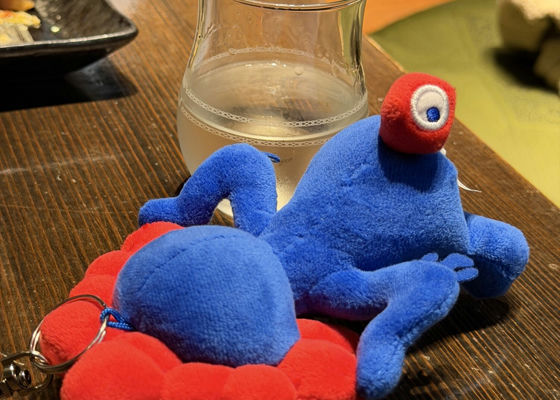
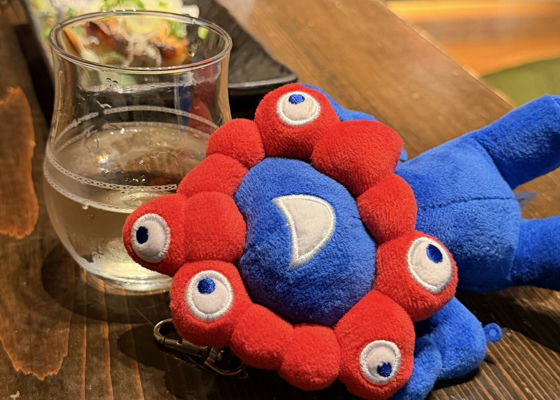
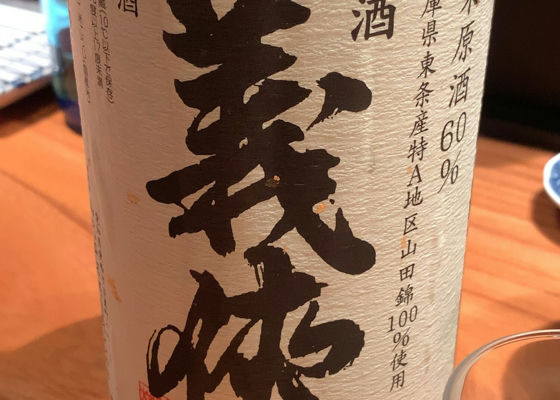

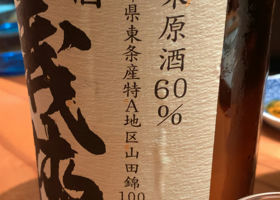
たけるパパ
Drinking outside at Kanbei Sake Mamoru for the 8th anniversary celebration.
This will be the first time to drink at this restaurant, too.
The rice used is 100% Yamadanishiki from Tojo, Hyogo Prefecture.
Polishing ratio is 60%.
The alcohol content is 16-17 degrees.
The aroma has a muscat aroma typical of Yamadanishiki, and gently rises to the surface.
The sake poured into the sake cup has a slight yellow tinge.
In the mouth, it has a thick and smooth texture. The strong umami spreads in the mouth, followed by an early onset of acidity and bitterness, which is followed by a slight stimulation that tightens the flavor.
Easy to drink.
Japanese>English
ジェイ&ノビィ
Hello, Daddy Takeru 😃!
It was a good outing, starting with Shinmasa, followed by the first drink of Jiikin and Jyushiyo!
We've only been a few times, Kanbei-san, do you go there often?
Japanese>English
たけるパパ
Jay & Nobby, thanks for the rice 😊.
This time, because of the anniversary celebration, we reserved seats and had a drink outside.
Kanbei, I have the impression that it is very difficult to get in. I kept giving up on getting in the last few times because the restaurant was full 😅.
Japanese>English

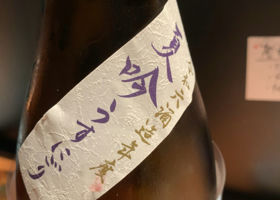
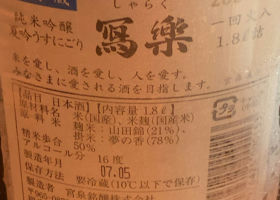
たけるパパ
Drinking outside at Kanbei Sake Mamoru for the 8th anniversary celebration.
We saw Sharaku's seasonal sake and decided to have some 😄.
Koji rice is 21% Yamadanishiki
Kake rice is 78% Yume-no-Kou
Polishing ratio is 50%.
The alcohol content is 16%.
Junmai Ginjo-Usu-nigori (light nigori) is a limited edition sake for early summer, which is bottled, fired immediately, and stored at low temperature.
The aroma is rich and sweet, with a hint of pear and melon.
On the palate, it has a soft mouthfeel with a hint of oli. The concentrated fruity flavor and round sweetness spreads in the mouth. Afterwards, a cherry-like acidity tightens the mouthfeel. The aftertaste is gentle and clean, and you can easily drink more and more. This is delicious!
Japanese>English
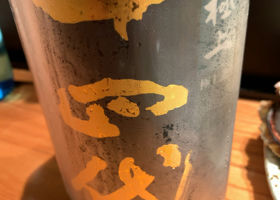
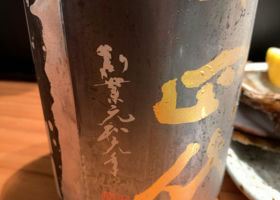
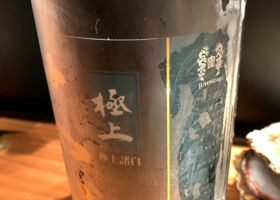

たけるパパ
Drinking outside at Kanbei Sake Mamoru for the 8th anniversary celebration.
It was my first time to drink Jyushidai, too.
The rice used is 100% Yamadanishiki from the special A district of Hyogo Prefecture.
Rice polishing ratio is 40%.
The alcohol content is 15%.
Morohaku is a traditional brewing method from ancient times that uses polished rice for both koji rice and kake rice.
The aroma is gorgeous, like bananas and peaches.
In the mouth, one senses a firm, mellow sweetness, followed by a slight sourness.
The taste is fresh and lingers on the palate for a while.
Japanese>English
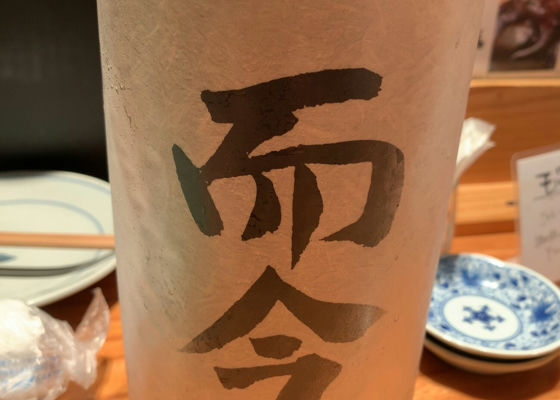
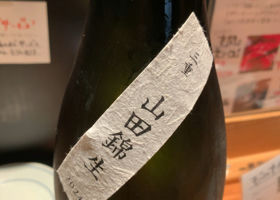
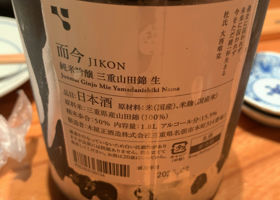
たけるパパ
Drinking outside at Kanbei Sake Mamoru for the 8th anniversary celebration.
It was the first time for me to drink it. This time it was Junmai Ginjyo Nama-zake.
The rice used is 100% Yamada-Nishiki from the Iga region of Mie Prefecture, where Erima is from.
Polishing ratio is 50%.
The alcohol content is 15.5
The sake poured into the sake cup is clear.
The aroma is mellow, like banana and pineapple.
In the mouth, the sweetness and umami of Yamada-Nishiki spread from a gorgeous fruity feeling to the palate with a good balance. There is no cloying taste, and the strong umami goes down the throat, making for a delicious, refreshing drinking experience. It has a nice lingering aftertaste that is different from that of a sweet sake with a sharp taste.
Japanese>English
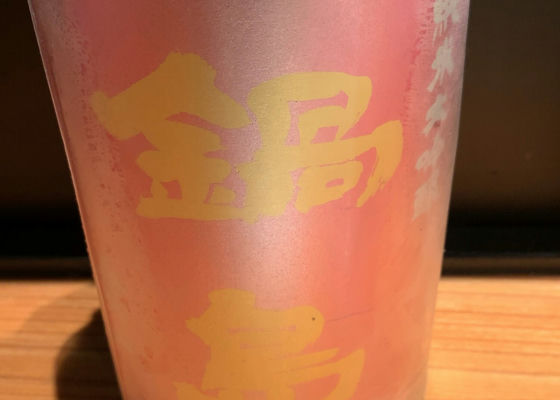
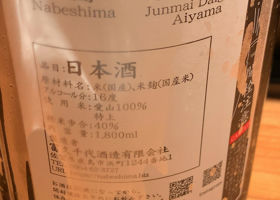
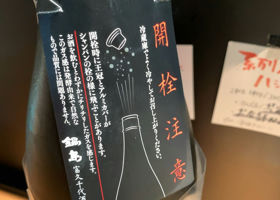
たけるパパ
Drinking outside at Kanbei Sake Mamoru for the 8th anniversary celebration.
Shinmasa followed by Aizan, a Junmai Daiginjo from Nabeshima.
The raw material rice is 100% Aiyama from Hyogo Prefecture, extra high quality.
Rice polishing ratio is 40
Alcohol content is 16 degrees Celsius
The sake poured into the sake cup is clear and smooth.
In the mouth, it has a gorgeous peach-like aroma and a gentle, round acidity. After that, sweetness and umami come out. The acidity is restrained, and the wine goes down the throat gently, with a fruity, juicy, refreshingly clean aftertaste. The sharpness is firm.
Japanese>English

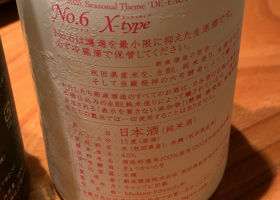
たけるパパ
Drinking outside at Kanbei Sake Mamoru for the 8th anniversary celebration.
Comparison of Niimasa No.6.
X-type is the excellent flagship model of No.6.
The rice used is Akita-grown rice suitable for sake brewing.
Polishing ratio is 45%.
Alcohol level is 13%.
Junmai Nama-zake made from raw yeast
The sake poured into the sake cup is clear and smooth.
In the mouth, it has a fresh aroma like muscat and a smooth texture. A soft sweetness spreads in the mouth, and the acidity of the sake is stronger than that of other types.
The aftertaste is clean and free of any cloying flavors. It is like a juice that can be drunk smoothly.
Perhaps it has been some time since the bottle was opened, but there is no sense of fizziness.
Japanese>English
ma-ki-
Good evening, Daddy Takel!
I'm so jealous of your first Shinmasa No.6 drinking comparison 😁✨.
I'd love to do a drinking comparison like this someday 🤤!
Japanese>English
たけるパパ
Good evening, ma-ki-. Thank you for your comment 😊.
I didn't expect to be able to compare the Niimasa, so as soon as I saw the menu, it was the first thing I ordered. It was a luxurious comparison, but I wanted to drink more 😁.
Japanese>English

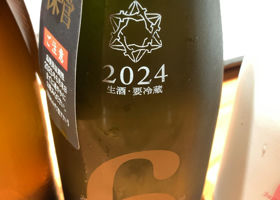
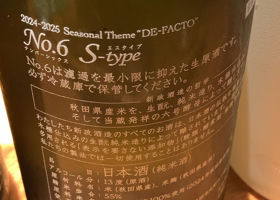
たけるパパ
Drinking outside at Kanbei Sake Mamoru for the 8th anniversary celebration.
Comparison of Shinmasa No.6.
S type is the middle class of No.6.
The rice used is Akita-grown rice suitable for sake brewing.
Polishing ratio is 55%.
The alcohol content is as low as 13 degrees Celsius.
Junmai Nama-zake made from the original sake yeast
The sake poured into the sake cup is clear and smooth.
In the mouth, the mild aroma is fresh and smooth. The soft sweetness spreads in the mouth, and the white wine-like acidity finishes it off crisply.
Fruity and soft sweetness like white peaches, it goes down the throat like a white wine.
The low alcohol content makes it light and refreshing. Perhaps it has been a while since the bottle was opened, but I could not feel the fizziness, but I could certainly taste the umami.
Japanese>English

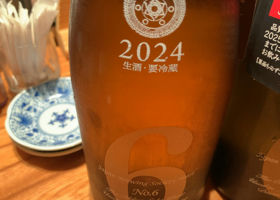
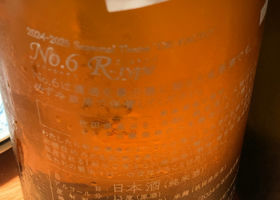
たけるパパ
Drinking outside at Kanbei Sake Mamoru for the 8th anniversary celebration.
The type is from left to right, R, S, and X.
This is my first Shinsei myself.
The first one is R type, the entry class of No.6.
The rice used for brewing is Akita-grown rice suitable for sake brewing.
The rice polishing ratio is 55% for Koji rice and 65% for Kake rice. Kake rice is 65%.
The alcohol content is a low 13%.
Nama-shu made from the original yeast.
The sake poured into the sake cup is clear and smooth.
In the mouth, it has a fresh aroma and a smooth texture. The sweetness spreads in the mouth and is well balanced with the acidity. The fruity, not-too-sweet taste is similar to that of white wine.
It is low in alcohol, so it can be drunk smoothly and without resistance. The 🍶 of the flavor
Japanese>English
ジェイ&ノビィ
Good evening, Daddy Takel 😃.
Oh! It was Kanbei's 8th anniversary, wasn't it?
We were talking about going there yesterday after the Bunraku tasting at Yodogawa's, but we couldn't get in anyway 😅I had a drink at another restaurant instead 😋.
Japanese>English

Saru808🐒
This Sake is sharp and a bit spicy. A light peach flavor and a semi dry finish. It has a nice full mouth feel. This a great way to finithe evening.
Gakki MasamuneForte Piano
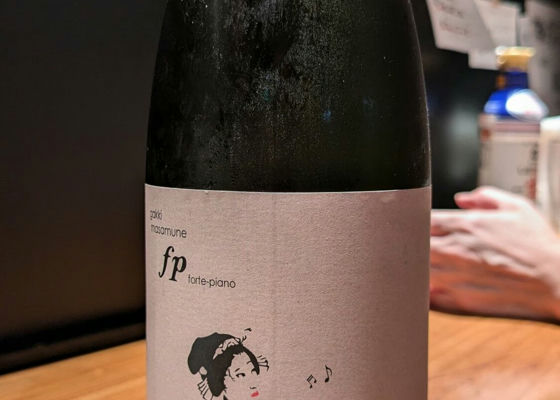
Saru808🐒
This Sake is a once a year brew. It has a light fragrance but a full mouth feel. Sweet and light with a pear flavor. The sweet finish lingers for a short while and ends clean. This lives up to its name loud and soft.

Saru808🐒
This Sake as a soft and full mouth feel. A fruity flavor and a dry finish. Very nice summer Sake.